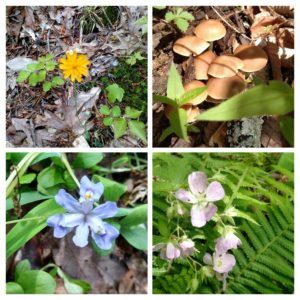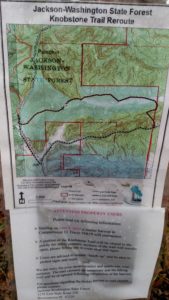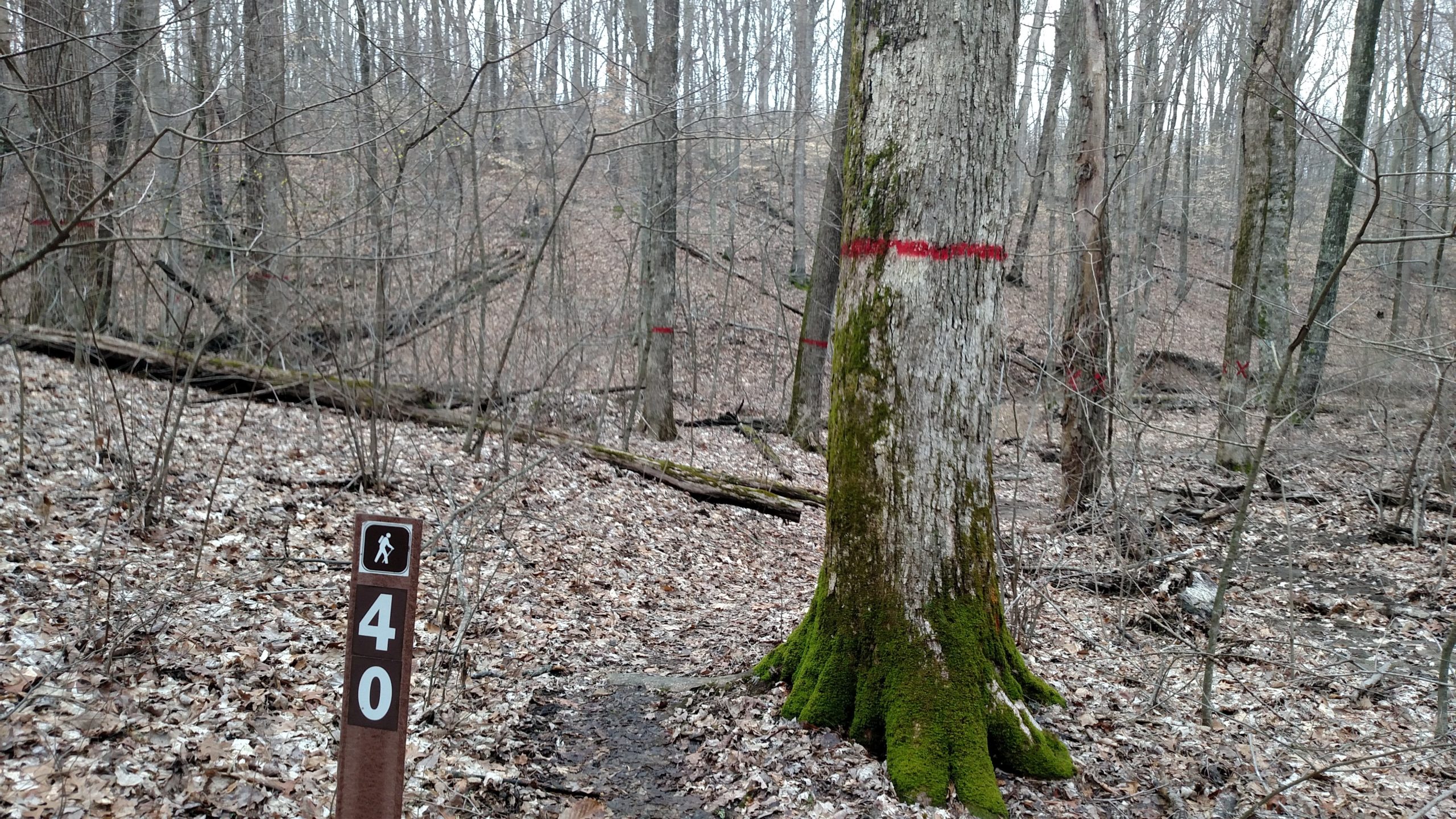by Todd Stewart
Last spring, at age 54, I accomplished something that I was unable to do at 22. I successfully hiked from Deam Lake to Delaney Park on the Knobstone Trail — many would call this a thru-hike. The Knobstone Trail is often referred to as the Little Appalachian Trail and widely known as a great place to train for the AT. The Knobstone Trail is Indiana’s longest and therefore most prestigious trail.
As a horseman, I had traveled the tree-laden path of Deam Lake hundreds of times. Now as a hiker, I find myself traveling down that same path, but it is unrecognizable to me. The joy of the path is now replaced with mud, stumps, and piles of wasted logging byproduct.
Along the trail there are still many pristine unspoiled places where bulldozers and chainsaws have not rumbled for many years. While hiking the trail at the height of spring flowers, I was amazed at the diversity and the beauty in areas allowed to recover from our pioneer days. But now, less than 5% of Indiana’s treasured state forests are protected.
We know Indiana can do better than less than 5%. I have been blessed to see the trails where the flowers still bloom and the trees still grow strong, but I have also seen areas not so lucky. Many parts of the forest have already been clear-cut, leaving only an abundance of invasive briars. I wonder if neighboring states treat their outdoor recreation opportunities with such little regard.
 During my thru-hike, I was accosted by a logging operator who hurled a several-hundred-pound log across the open trail, with no regard to passing hikers’ safety. This unsupervised logging yard was just feet away from the open trail. This harvest was approved by the Indiana Department of Natural Resources (DNR). Other hikers, including a veteran, shared this same scare.
During my thru-hike, I was accosted by a logging operator who hurled a several-hundred-pound log across the open trail, with no regard to passing hikers’ safety. This unsupervised logging yard was just feet away from the open trail. This harvest was approved by the Indiana Department of Natural Resources (DNR). Other hikers, including a veteran, shared this same scare.
While I was hiking north on the Knobstone Trail, near the Stuart Oxley trailhead, I saw that valuable hardwood trees had been removed so that the timber could be sold. The only trees left in this section of the trail were less valuable pine trees. Not long after the logging, a large wind blew the unprotected left over pines to the ground. This closed a large section of Knobstone trail.
Today there is a section of the Knobstone Trail in the Jackson Washington Forest that is closed for logging. The DNR closed this section for the public’s protection. The map redirects hikers to a road walk-around, taking the hiker around what was once was a gorgeous section of trail (see my previous blog). Hikers who take this walk-around have no way of knowing that there are several unrestrained, aggressive large dogs guarding this road walk.
 Indiana’s great diverse forests have been developing since the Ice Age without the help of chainsaws and bulldozers, and will continue to develop if we allow them to. Indiana is replete with successional habitat. What we need are more deep forest ecosystems.
Indiana’s great diverse forests have been developing since the Ice Age without the help of chainsaws and bulldozers, and will continue to develop if we allow them to. Indiana is replete with successional habitat. What we need are more deep forest ecosystems.
The unstated reason for logging is to gain revenue for a woefully underfunded DNR, and I fear a balance has been tipped. It’s true that state forests exist timber sources AND recreation. But timber revenues currently take precedence. This is not right, and it’s diminishing the experience of our forests, and jeopardizing the safety and needs of Hoosiers.
If you’re unhappy with how our state forests are being treated, come to IFA’s pro-forest rally Monday, February 20 at the State House in Indianapolis and help show our lawmakers how many of us value trees left standing. You can also express your support for Senate Bill 420, which protects 10% of state forests from logging.

